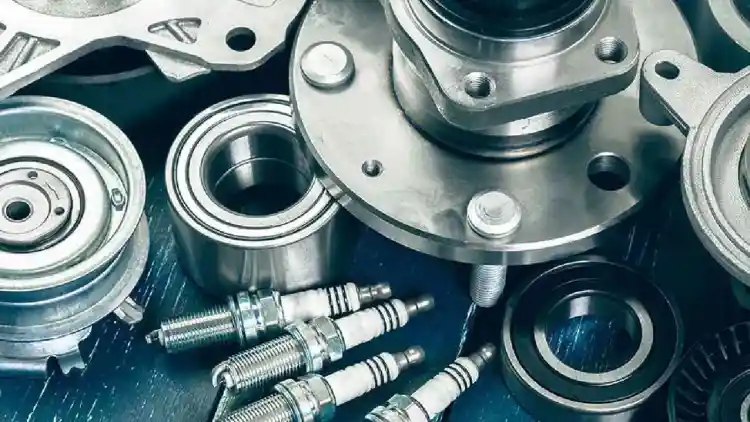- What to Include in Your Accident Documentation
- When to File an Official Report
- Post-Accident Timeline
- FAQ
Had a car accident? Knowing how to create a complete car accident report with our practical checklist. This guide shows you how to document the scene and handle insurance claims.
What to Include in Your Accident Documentation
When a car accident happens, it's important to collect details. These pieces of information are vital for your car accident report and for dealing with your insurance company later. Always try to get these details right at the crash scene, if it's safe to do so:
Essential Information to Collect
Other driver's information: Get their full name, phone number, and driver's license number. Also, write down their car insurance company name and policy number. Don't forget to check their insurance card.
Vehicle details: Write down the make, model, and year of all vehicles involved in the collision. Take note of their license plate numbers too. This helps in clear documentation.
Witness contact details: If anyone saw the car crash, politely ask for their name and phone number. Witnesses can provide valuable statements for your official report. Try to find at least two, if possible.
Scene notes: Look around and note down the road conditions (wet, dry, icy), any traffic signs or signals nearby, and the weather at the time of the incident (sunny, rainy, foggy). This adds important context to your car accident report.

Visual Evidence Checklist
Pictures are powerful proof for your car accident report. Your smartphone is a great tool for this. Make sure to take many clear photos from different angles. Take pictures as soon as possible after the collision, when the scene is still fresh:
Vehicle damage: Take photos of all damage to your car and the other car(s) involved. Walk around each vehicle and take shots from all sides (360 degrees). Get close-up photos of specific damaged areas. This is key for your insurance claims.
The surrounding area: Take pictures that show the traffic signs, street lights, or signals close to where the accident happened. This helps show the condition of the road and how the incident occurred.
Marks on the road: Look for skid marks on the road or any debris (broken glass, plastic pieces) from the crash. These can show how the cars moved or where impact happened. Take clear photos of these.
Injuries: If you or anyone else has visible injuries, take photos of them. This is very important for medical and insurance claims. Make sure to do this respectfully and with permission if possible. These photos can be a key part of your full car accident report.
When to File an Official Report
It's not always clear when you need to call the police to file an official car accident report. However, in certain situations, it's a must. Knowing these rules can save you trouble later and fulfills your legal obligations. Always file an official report if:
Mandatory Reporting Situations
Someone is hurt: If anyone involved in the car crash is injured, even slightly, and needs medical help, you must report it to the police right away. This includes yourself, passengers, or people in other vehicles. Injuries make an official police report essential for insurance claims and legal matters.
There's major property damage: Most places have a rule about property damage. If the costs to repair the cars or other property (like fences, streetlights) are above a certain amount, you need to report it. This threshold often ranges from around AED/SAR 5,000 to AED/SAR 10,000. It's best to file this official report within 24 to 48 hours.
It's a hit-and-run: If someone hits your car and drives away without stopping, this is a hit-and-run incident. You should report this to the police immediately, ideally within the first two hours. Provide as many details as you can about the other vehicle and driver, even if it's just a partial license plate or car color.
Digital Reporting Options
In today's digital world, many police departments make it easier to file a car accident report, especially for minor incidents. You might not always need to wait for an officer at the scene. Check with your local police force to see what digital tools they offer:
Mobile app submissions: Some police forces have special apps where you can enter all the accident details, upload photos, and submit your car accident report directly from your phone.
Online portal filing: You can often find online forms on the police department's website. These allow you to fill out your car accident report from your computer at home. This is especially useful for crashes with no injuries.
Video call assessments: For very minor car crashes, some police departments might offer video calls. An officer can look at the damage through your phone's camera and help you complete your report without needing to be there in person. This speeds up the process of getting your official report.

Post-Accident Timeline
After the initial shock of a car accident, there are important steps to take. This timeline helps you organize what to do next to handle your insurance claims and legal obligations. Remember, prompt action is often best.
First 24 Hours: This period is critical right after the car crash.
Contact your insurance provider: Call your insurance company as soon as you can. Tell them about the car accident and begin the process for your insurance claims. Even if you're unsure who's at fault, report it.
Preserve vehicle damage evidence: Don't get your car repaired right away. Your insurance company might want to inspect the damage first. Keep all photos and notes from the accident scene handling.
Track medical symptoms: Even if you feel fine, some injuries might show up later. Pay attention to how you feel. If you notice any pain or discomfort, see a doctor. Keep a record of all medical visits and costs.
Within 1 Week: As the first days pass, focus on gathering important documents for your car accident report.
Get a copy of the police report: Contact the police department that handled your car accident report and get an official copy. Your insurance company will need this.
Review witness statements: If there were witnesses at the accident scene, make sure their details are correctly noted in the police report or that you have their contact information. Their statements can be very helpful for your insurance claim.
Talk to repair shops: Get estimates from trusted repair shops for the damage to your vehicle. This helps your insurance company assess the cost of repairs.
30-Day Follow Up: About a month after the car crash, you should be wrapping things up.
Finalize insurance claims: Work with your insurance provider to make sure all insurance claims are complete and that you receive proper compensation for damages and injuries. This might involve signing release forms.
Address lingering health concerns: If you're still feeling effects from the car accident, continue to get medical treatment. Your health is the most important thing. Keep all medical records for your car accident report file.
File necessary legal documents: If your situation is complex, or if there are disputes, you might need to file legal documents or seek legal advice. This is where understanding your legal obligations comes in.
FAQ
Here are some frequently asked questions about car accident reports and how to handle them. We aim to answer your common concerns clearly and simply.
Q:Should I report minor bumper scratches?
A: Yes, it's smart to. Even small collisions should be part of a car accident report for your insurance. Many policies ask for a report, no matter how minor the damage is. It protects you later.
Q:Can I amend a report if I forgot details?
A: Yes. If you recall new details or find more evidence, contact the police officer who handled your car accident report within 72 hours. You can often add more info, like new photos or witness details. Don't worry, it happens!
Q:Do I need a lawyer before filing?
A: Usually, no, not for a simple car accident report. But if injuries are serious, or if there's a fight over who's at fault (liability disputes), talking to a lawyer is a very good idea. They can help with your legal obligations.
Read More:
2025 Xterra vs Fortuner:Mid-Size SUV Comparison Guide













